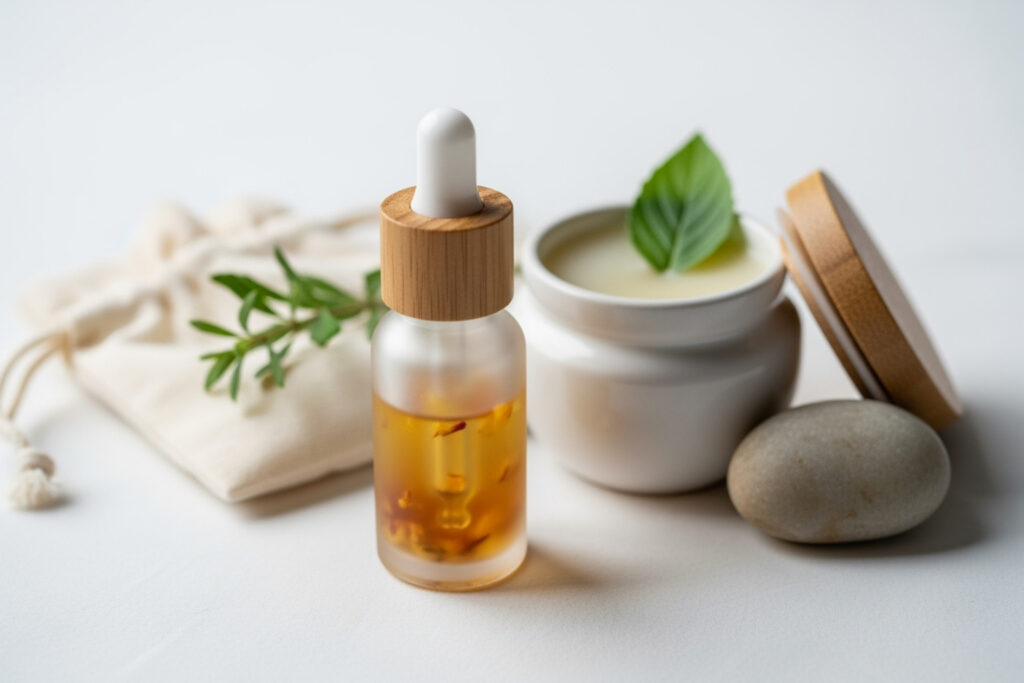Understanding Clean Makeup Ingredients
Seeking clean makeup ingredients means choosing products made without certain chemicals linked to health concerns. This movement focuses on formulas that are safer for your skin and the planet.
Here’s what “clean makeup ingredients” often mean:
- No Known Harmful Chemicals: Products are made without parabens, phthalates, synthetic fragrances, formaldehyde-releasing preservatives, and other ingredients some consumers prefer to avoid.
- Transparency: Brands aim to be clear about all ingredients used. This helps you know what you’re putting on your skin.
- Health First: It’s important because much of what you apply to your skin can get absorbed into your bloodstream. Knowing your ingredients helps you make healthier choices.
- Environmental Care: Many clean beauty brands also consider their environmental impact.
The term “clean beauty” isn’t strictly regulated. This means different brands may have different standards, but the core idea is always about making more conscious choices for your beauty routine.
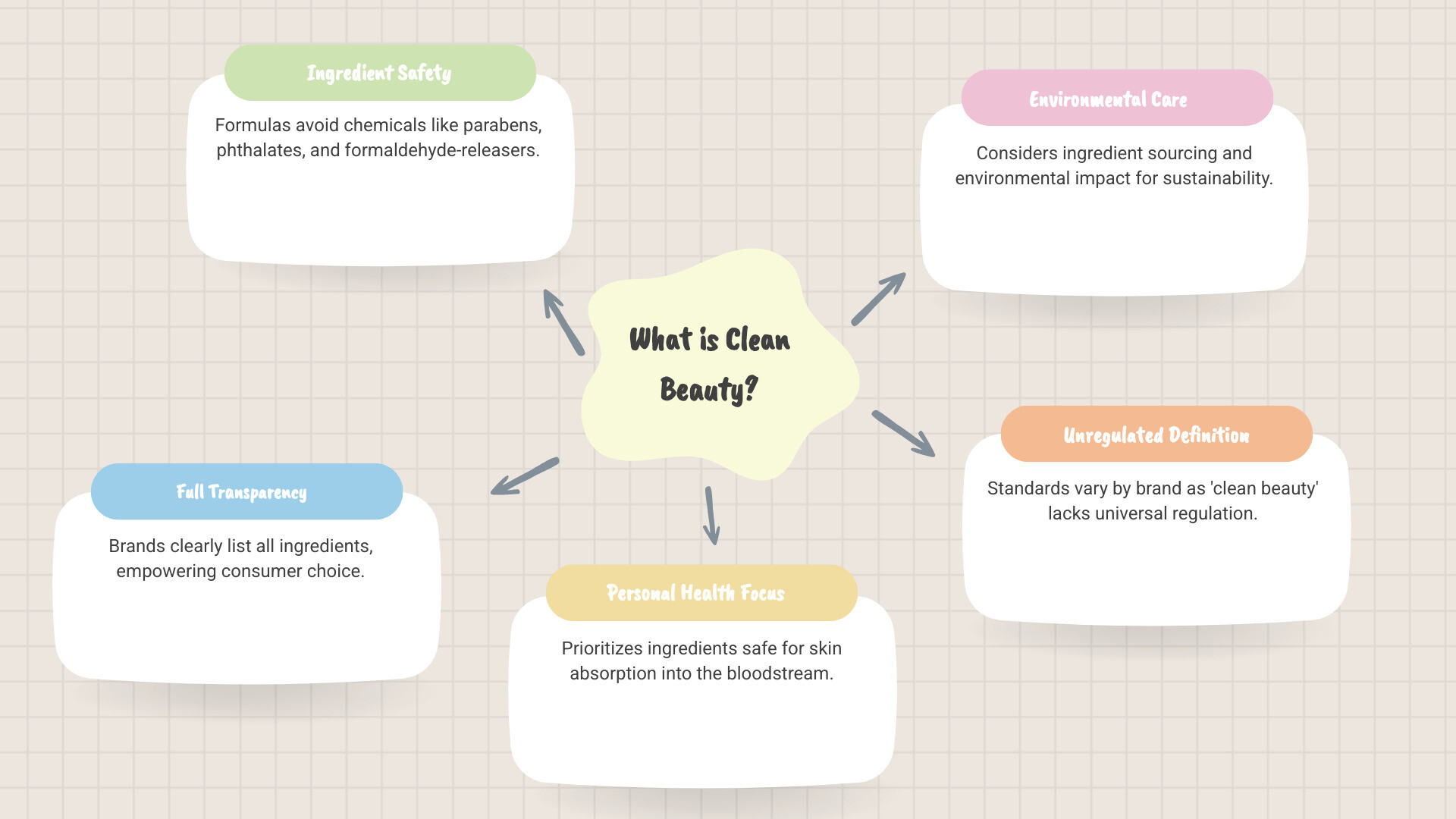
Clean makeup ingredients word guide:
Decoding “Clean Beauty”: Beyond the Buzzwords
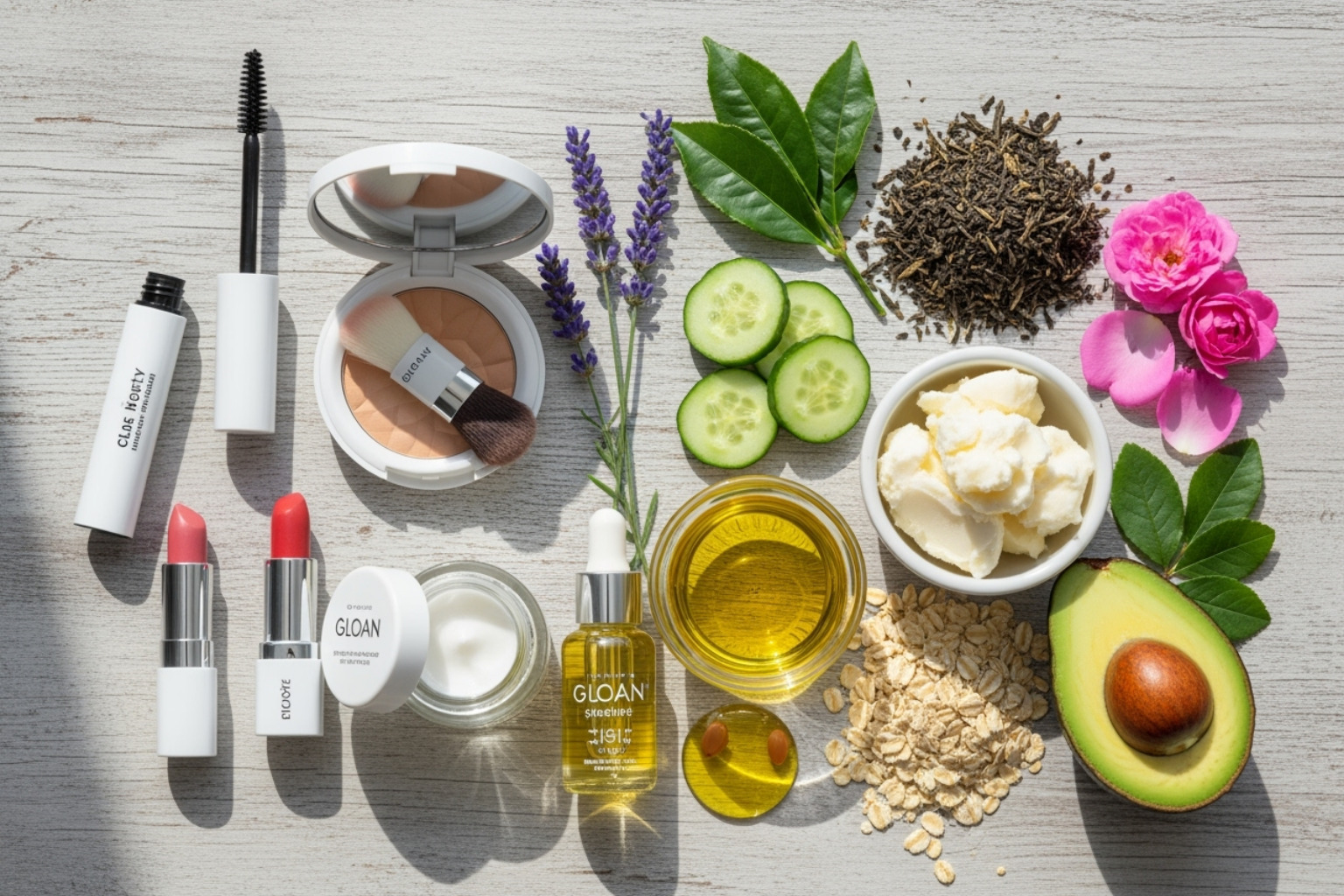
The term “clean beauty” sounds official, but it’s an unregulated term with no universal definition. This lack of regulation means every brand gets to decide what “clean” means to them. One company might focus on removing parabens, while another prioritizes natural ingredients.
At Beyond Beauty Lab, we believe clean makeup ingredients should be about three core things: ingredient safety, transparency, and sustainability. But that’s our take in a sea of interpretations.
So how do you steer this landscape? The smartest brands have moved beyond vague “clean” claims to create specific “Made Without” lists. These lists are like a product’s resume–they clearly state what ingredients the brand has chosen to exclude from their formulations.
You might see lists that exclude parabens for preservation concerns, phthalates for hormone disruption worries, formaldehyde-releasers for safety reasons, or synthetic fragrance for sensitivity issues. This transparency gives you something concrete to evaluate instead of trusting a buzzword.
Unlike prescription drugs, cosmetic products don’t need FDA pre-market approval. The FDA authority over cosmetics is quite limited, which means brand-specific standards become even more important.
This puts the power and responsibility in your hands. Since much of what you apply to your skin can be absorbed into your bloodstream, understanding ingredients is a form of self-care.
Ready to become fluent in clean beauty language? Check out our Ingredient Glossary: Clean Beauty Terms You Should Know to decode those mysterious ingredient lists like a pro.
The “Not-So-Clean” List: Common Ingredients to Avoid in Your Makeup
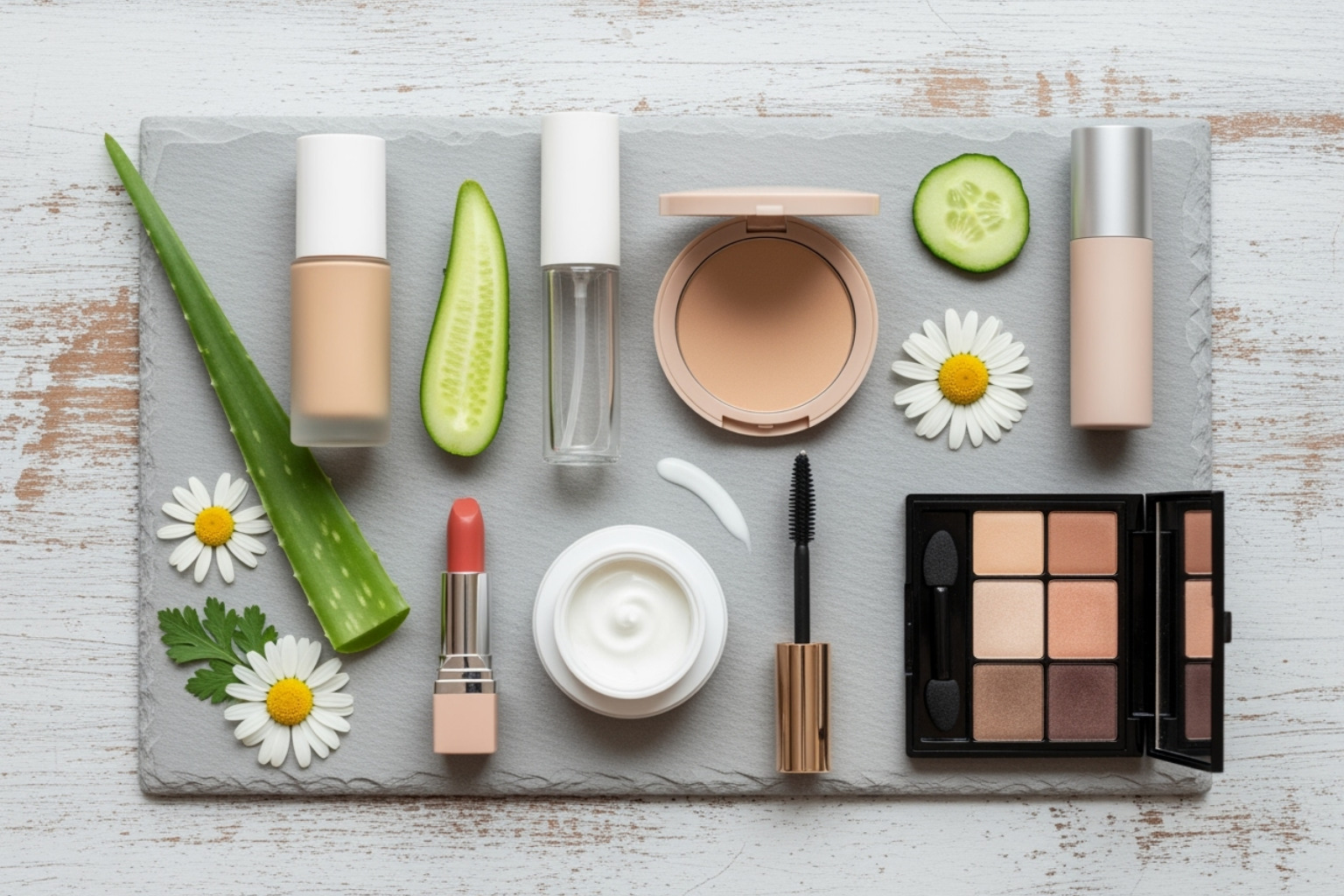
A big part of clean makeup ingredients is knowing what to leave out. Conscious consumers are becoming savvier about ingredients that may not be best for us or the planet. Some ingredients have raised health or environmental concerns.
Here are common ingredients many experts and conscious brands advise avoiding:
- Parabens: Common preservatives used to prevent bacteria and mold growth. They’ve been linked to hormone disruption and are often on “Made Without” lists.
- Phthalates: Often in synthetic fragrances, these are potential endocrine disruptors linked to various health issues.
- Formaldehyde-releasing Preservatives: These preservatives slowly release formaldehyde, a potential carcinogen.
- Synthetic Fragrance (Parfum): This term can hide hundreds of chemicals, including phthalates. It can sensitize skin, leading to irritation, allergies, or asthma.
- Talc: A mineral used in powders for its absorbent properties. Concerns arise from the risk of asbestos contamination, as talc and asbestos naturally occur near each other.
- Petroleum (Mineral Oil, Paraffinum Liquidum): A crude oil byproduct that can create a skin barrier, potentially trapping impurities. While purified forms are considered safe, its non-renewable source and potential for impurities are concerns.
- FD&C Color Pigments: These artificial colors are derived from petroleum or coal tar and have been linked to health concerns, especially in sensitive individuals.
- Propylene Glycol & Butylene Glycol: These are humectants and solvents that can sometimes be irritating to the skin, especially in higher concentrations.
For a deeper dive into building a routine free from these concerns, check out our guide on Non-Toxic Skincare.
Potential Endocrine Disruptors
Among the most concerning are ingredients that can disrupt the endocrine system, which regulates essential hormones.
- Phthalates: Commonly found in synthetic fragrances, studies link phthalates to adverse reproductive and neurodevelopmental issues. Higher levels have been detected in African Americans compared to the general population, highlighting a “toxic equity problem” in beauty products marketed to women of color.
- Parabens: These preservatives can mimic estrogen and have been detected in human tissues, including breast cancer tumors. Though a direct link isn’t established, many avoid them as a precaution.
The discussion around these chemicals is complex. For more expert insight, listen to Dr. Tamarra James-Todd in this Interview with Dr. Tamarra James-Todd on Endocrine-Disrupting Chemicals.
Known Irritants and Allergens
Some ingredients can cause immediate, uncomfortable skin reactions.
- Synthetic Fragrance (Parfum): A common culprit for skin sensitivities, “fragrance” or “parfum” can represent hundreds of undisclosed chemicals. It can cause contact dermatitis, redness, itching, or hives. Avoiding synthetic fragrances is often recommended for sensitive skin, rosacea, or eczema. Research on fragrance sensitization continues.
- FD&C Color Pigments: These artificial dyes, often labeled with CI numbers (e.g., CI 19140 for Yellow 5), are used to give makeup vibrant colors. Some individuals experience allergic reactions or irritation, particularly around the eyes.
Contamination Concerns
Sourcing or processing can introduce unwanted contaminants.
- Talc: The concern with talc is its natural proximity to asbestos. If not carefully processed, talc can be contaminated with asbestos, a known carcinogen. While reputable brands claim to use asbestos-free talc, many clean beauty advocates avoid it as a precaution.
- Petroleum: Impurities in poorly refined petroleum ingredients are a concern. The sourcing and purification process is critical, even for cosmetic-grade versions.
Understanding these “not-so-clean” ingredients empowers you to make more informed choices. You can learn more about specific substances and their potential impacts on platforms like Chemicals of Concern.
The Good List: Beneficial Clean Makeup Ingredients to Look For

Now for the exciting part: beneficial clean makeup ingredients! These ingredients nourish your skin while helping you look your best. Your makeup can improve your skin over time, not just cover it. The industry is moving towards makeup and skincare working hand-in-hand.
At Beyond Beauty Lab, we’re all about putting your skin first. We focus on using the highest-quality minerals and organic ingredients whenever possible. Our full line of high-performance, cruelty-free, skincare-infused makeup is designed with your skin’s health in mind. Combining natural and organic ingredients with safe synthetics helps reduce irritation, making our formulas ideal for sensitive skin or conditions like acne, rosacea, or eczema.
Want to learn more about how nature can transform your routine? Explore the Benefits of Plant-Based Skincare.
Nourishing Plant Oils and Butters
Natural oils and butters are packed with vitamins, antioxidants, and fatty acids that hydrate, protect, and soothe.
- Jojoba Oil mimics your skin’s natural oils, so it won’t clog pores and leaves skin feeling soft.
- Shea Butter is a powerhouse for deep moisture, rich in vitamins A, E, and F that keep skin supple and hydrated.
- Avocado Oil offers protection and moisture for dry or mature skin with its vitamins A, D, and E.
- Sunflower Seed Oil soothes irritation and strengthens the skin’s barrier, making it ideal for sensitive skin.
These ingredients do more than just make your makeup look good; they actively work to improve your skin’s health! Find more about the magic of natural oils in our article on Natural Oils for Anti-Aging and Hydration.
Soothing Botanical Extracts
Botanical extracts can calm, protect, and refresh your skin.
- Aloe Vera is famously soothing and healing, packed with vitamins, minerals, and amino acids to hydrate and protect.
- Green Tea Extract is a potent antioxidant that helps shield skin from environmental stress and calms redness.
- Pomegranate Extract is another strong antioxidant that helps fight signs of aging and evens skin tone.
- Chamomile Flower Extract is ideal for sensitive skin due to its anti-inflammatory and calming effects.
- Pine Bark Extract is loved for its skin-evening and antioxidant benefits.
- Hibiscus Bark Extract supports skin elasticity and adds more antioxidant protection.
For more secrets from nature’s pharmacy, check out our insights on Healing Herbs for Skin.
High-Performance Safe Ingredients
Choosing clean makeup ingredients doesn’t mean sacrificing results. Many safe, high-performing ingredients–both natural and synthetic–offer incredible benefits.
- Hyaluronic Acid is a superstar hydrator that locks moisture into your skin, plumping it and making fine lines less noticeable. You’ll find this powerhouse in our HydroPure Tinted Serum and Lip Treatments!
- Niacinamide (Vitamin B3) is a multi-tasker that helps minimize pores, even skin tone, reduce redness, and strengthen the skin’s barrier.
- Squalane (from olives or sugarcane) is a stable, non-comedogenic moisturizer that mimics skin’s natural oils, leaving it soft and smooth without greasiness.
- Zinc Oxide acts as a mineral shield against harmful UVA and UVB rays. Its calming properties make it great for sensitive or acne-prone skin.
- Titanium Dioxide is another mineral filter that offers broad-spectrum UV protection and provides pigment for makeup products.
These ingredients show how clean makeup ingredients can be both effective and gentle. Curious about other cutting-edge clean ingredients? Dive into our Ingredient Spotlight: Why Everyone’s Talking About Bakuchiol.
How to Become a Conscious Shopper: Your Toolkit for Success
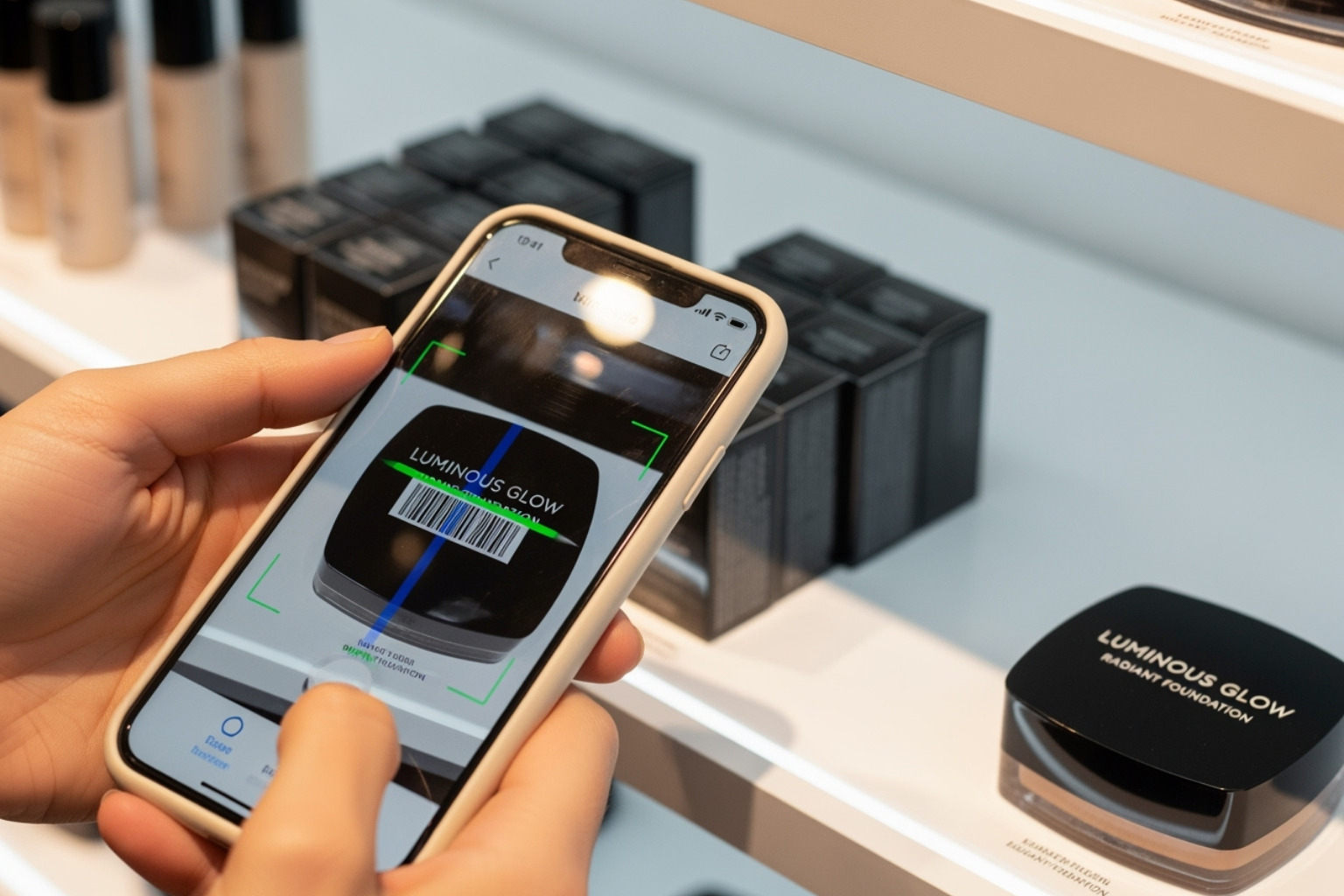
Becoming a conscious beauty shopper can feel overwhelming, but you have the power to choose clean makeup ingredients that align with your values. It just takes a little knowledge and a few tools.
Today’s consumers are savvier than ever. We know certain ingredients aren’t ideal for our skin or well-being. Luckily, simple ways exist to understand cosmetic labels and what ingredients do.
For a comprehensive guide to navigating those sometimes-tricky ingredient lists, make sure to check out our article, Beyond the Label: How to Read Clean Beauty Ingredients Like a Pro.
How to Read an INCI Label Like a Pro
The ingredient list on your makeup is your secret weapon. It’s called the INCI (International Nomenclature of Cosmetic Ingredients) list.
The INCI Meaning is a worldwide system that gives every cosmetic ingredient a standard name, making it easier to identify ingredients globally.
A key tip: ingredients are listed in Descending Order of Concentration. The first ingredient is the most plentiful. This helps you gauge the amount of any given ingredient. If an ingredient you want to avoid is high on the list, you might want to skip that product. If it’s near the end, the amount is tiny.
Focus on Identifying Key Ingredients. Look for beneficial ingredients like Hyaluronic Acid, Squalane, or Jojoba Oil higher on the list. If ingredients you want to avoid, like parabens or “fragrance,” are listed high up, you may want to rethink your choice.
Want to dive deeper into cosmetic labeling rules? The FDA has some guidelines you can explore on their FDA regulations on labeling page.
Top Tools and Resources for Checking Clean Makeup Ingredients
Understanding scientific names on a label can feel impossible. Luckily, technology can help. Think of these tools as your personal ingredient detectives!
Here are some fantastic websites and apps that can help you become an ingredient pro:
- EWG’s Skin Deep Database: This huge database has info on over 74,000 products! Scientists compare ingredients to tons of safety databases and give each product a safety score. Super helpful for a quick check.
- INCIDecoder: A truly awesome tool that lets you paste a whole ingredient list or search for just one ingredient. It breaks down what each one does and its safety.
- Skincarisma: Similar to INCIDecoder, you can paste ingredient lists here too, even if the product isn’t in their library. It helps you understand ingredients and find products perfect for your skin type.
- Think Dirty App: Just scan a product’s barcode with your phone, and this app gives you an instant assessment of its ingredients and any potential risks. It’s all about helping you make smart choices.
- CosDNA: This site gives you a safety index and checks ingredients for things like acne triggers, irritants, and overall safety ratings.
- Yuka App: This app gives products an overall score out of 100. Higher scores mean safer products. It’s a quick way to gauge a product’s “cleanliness.”
These tools take the guesswork out of understanding what’s really inside your beauty products. And for more simple explanations of common clean beauty terms, don’t forget to revisit our Ingredient Glossary: Clean Beauty Terms You Should Know.
Spotting Greenwashing and Misleading Claims
With the rise of clean beauty, we also see more “greenwashing.” This is when brands use marketing to make a product seem more natural, eco-friendly, or “clean” than it is.
Watch out for Unregulated Buzzwords like “all-natural,” “non-toxic,” “hypoallergenic,” “chemical-free,” and “dermatologist-tested.” These terms often aren’t regulated by the FDA, so brands can use them freely without meeting a set standard. For example, “chemical-free” is misleading since everything, including water, is a chemical.
“Natural” doesn’t always equal “Safe.” An ingredient from nature isn’t automatically good for everyone. Many natural ingredients, like certain essential oils, can be allergens or irritants.
To cut through the noise, look for Third-Party Certifications. While not every clean product has one, these certifications mean an independent group has approved the product against strict standards. Here are a few reliable ones:
- Leaping Bunny: This certifies that a product is truly cruelty-free, meaning no animal testing was involved.
- EWG Verified: Products with this label meet tough health and transparency standards, actively avoiding chemicals of concern.
- USDA Organic: This is for products that contain a high percentage of organic farm ingredients.
Always check how a store or brand defines its own “clean” label. Many create their own lists of excluded ingredients. Here at Beyond Beauty Lab, we are deeply committed to being totally transparent about our formulas, so you always know exactly what you’re getting.
Understanding these details helps you become a smart shopper, making choices that support your health and values. And of course, we are proud to offer only Cruelty-Free Beauty Products across our entire range.
Frequently Asked Questions
As we explore clean makeup ingredients, some common questions often pop up. Let’s clear them up together!
Is ‘natural’ or ‘organic’ makeup always safer?
This is an important question, and the answer is: not always. While “natural” and “organic” sound good, these terms don’t automatically mean “safer” in cosmetics.
The industry doesn’t have strict rules for these words. A product can be labeled “natural” with only a small amount of natural ingredients. Plus, not all natural ingredients are good for your skin–think of poison ivy.
What matters is the formulation–how ingredients are combined and in what amounts. Some natural ingredients can cause irritation, while many lab-created synthetic ingredients are safe, stable, and effective.
At Beyond Beauty Lab, we focus on ingredients that are effective, safe, and gentle. This means we choose the best, whether they come from nature or are carefully created in a lab. You can learn more about finding the right fit for your skin in our guide on Natural Skincare Solutions.
Can clean makeup perform as well as conventional makeup?
Yes, absolutely. The world of clean beauty has grown so much that you no longer have to choose between products that are good for you and products that work well.
Today’s clean beauty brands are innovative, creating amazing textures, vibrant colors, and long-lasting wear without questionable ingredients. They use smart plant-based options and advanced science for incredible results.
Many beneficial clean makeup ingredients like hyaluronic acid and squalane are powerhouses that improve skin health. This has led to the trend of skincare-makeup hybrids, which actively improve your skin while you wear them, offering benefits that traditional makeup often lacked.
Simply put, the idea that “clean” means “less effective” is outdated. We’re proud to offer high-performance, cruelty-free makeup that stands strong next to any conventional product. Find our range and see for yourself in our Clean Makeup Brands collection.
How can I switch to a clean beauty routine on a budget?
Switching to a clean beauty routine doesn’t have to be expensive. Think of it as a journey, not a race. There are smart ways to make it affordable.
Instead of replacing everything at once, start small. When a daily product like foundation or concealer runs out, replace it with a clean alternative. This spreads out the cost and helps you find what you love at your own pace.
Look for multi-use products. Many clean beauty brands offer versatile items, like a cream blush for cheeks, lips, and eyes. This saves money and space.
Keep an eye out for sales, promotions, and sample sizes from clean beauty brands. These are great ways to try new products without a big commitment.
Finally, prioritize your purchases. Focus your budget on products that stay on your skin the longest, like foundation or moisturizer. Also, prioritize items for sensitive areas like the eyes and lips, where clean makeup ingredients can make the biggest difference.
Making conscious choices is all about being smart and intentional, not necessarily spending more. For even more clever tips on saving money while glowing, check out our guide on Clean Beauty on a Budget: Smart Tips for Glowing Skin.
Conclusion
Diving into clean makeup ingredients shows how powerful your choices are. It’s a movement towards understanding what we put on our skin, safeguarding our health, and being kinder to the planet.
By learning to decode labels, spot “greenwashing,” and seek out beneficial ingredients, you empower yourself. This isn’t about perfection, but making informed choices that align with your values. It’s a personal journey, and every step towards conscious consumerism is a win for your skin and your peace of mind.
At Beyond Beauty Lab, we believe in a holistic approach to beauty–what you put on your body is as important as what you put into it. Our mission is to be your trusted guide, providing educational resources to help you steer the beauty world. We’re committed to transparency, quality, and helping you find a routine that makes you feel incredible.
Ready to take the next step on your clean beauty journey? We invite you to explore our carefully curated selection of clean makeup ingredients and products. Find a world where high performance meets high standards, and beauty harmonizes beautifully with well-being.

